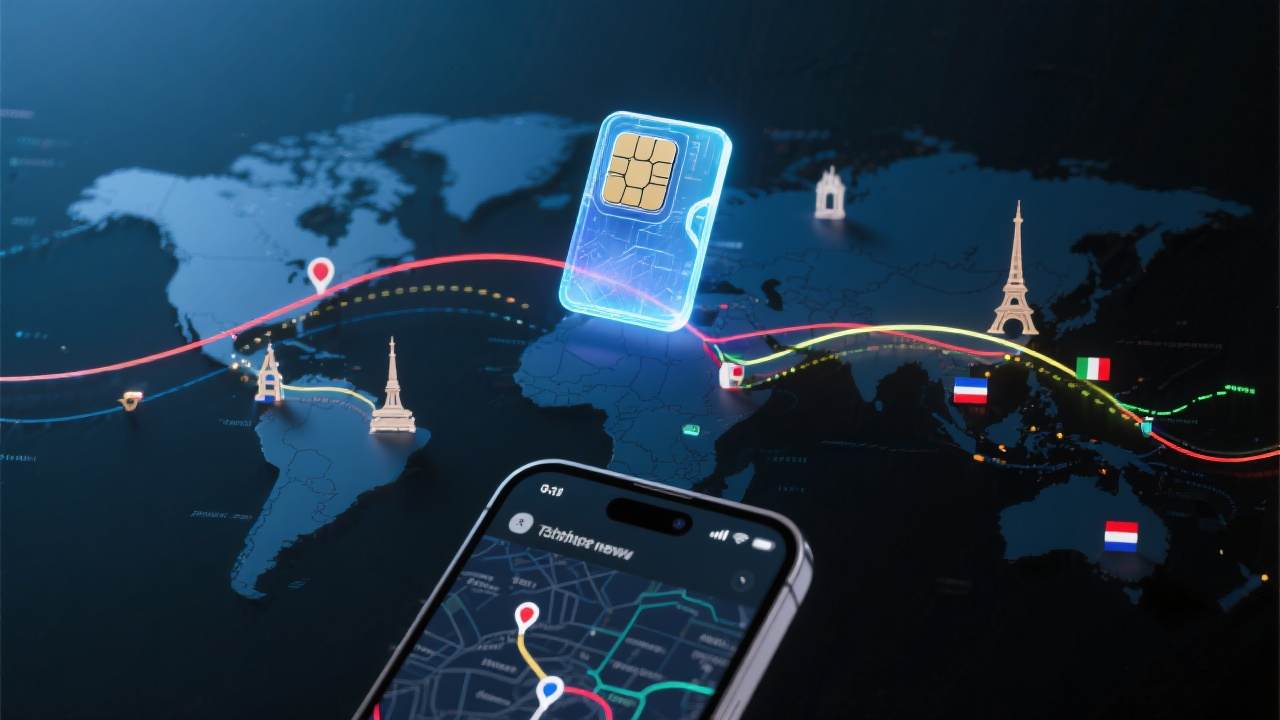
The End of the Airport SIM Card Hunt
If you’ve ever landed in a new country, bleary-eyed and desperate for a data connection, you know the ritual: hunting for a SIM card kiosk and hoping your phone will cooperate.
The Invisible Revolution: How eSIMs Are Reshaping Our Connected World
The Fading Era of Physical SIM Cards
For decades, the humble SIM card has been the gatekeeper of our mobile connectivity. A tiny piece of plastic, it dictated our network, our phone number, and often, our travel headaches. But a quiet revolution has been underway, one that’s making that physical chip increasingly obsolete: the embedded SIM, or eSIM. This digital alternative is not just a convenience; it’s fundamentally changing how we connect, offering a glimpse into a more flexible and integrated future.
What Exactly is an eSIM?
At its core, an eSIM is a software-based representation of a mobile network subscription. Unlike traditional SIM cards that you physically insert and swap, an eSIM is built directly into your device’s hardware. Think of it as a programmable chip that can store multiple network profiles. This means you can switch carriers, activate new plans, or manage different numbers, all without ever touching a physical card. The technology is part of a global specification developed by the GSMA, aiming to standardize this next generation of mobile connectivity.
The Unseen Benefits: Flexibility, Security, and Simplicity
The advantages of eSIM technology are profound and far-reaching. For the everyday user, the most immediate benefit is unparalleled flexibility. Travelers, for instance, can ditch the frantic search for local SIM cards upon arrival. With an eSIM, you can download a local data plan directly to your phone, often at a fraction of the cost of international roaming. This seamless network switching across borders is a game-changer, making global communication more affordable and accessible.
Beyond travel, eSIMs simplify device setup. No more fumbling with tiny trays or worrying about incompatible SIM card sizes. Activation can be as simple as scanning a QR code or even happening automatically at the time of purchase. This streamlined process is a significant leap forward in user experience.
Security also gets a significant boost. Because an eSIM is embedded, it cannot be physically removed or easily cloned, unlike traditional SIM cards. This inherent resistance to physical tampering and SIM swapping attacks adds a crucial layer of protection for your personal data and mobile identity.
Beyond Smartphones: The IoT Frontier
While smartphones are the most common application, the true potential of eSIM technology extends far beyond. The Internet of Things (IoT) is a prime example. As more devices, from smartwatches and fitness trackers to connected cars and industrial machinery, become internet-enabled, eSIMs offer a scalable and efficient solution for managing their connectivity. Imagine a car that can receive over-the-air updates or provide real-time diagnostics without needing a physical SIM. This is the promise of eSIM in the IoT landscape, enabling a more interconnected and autonomous world.
The Road Ahead: Challenges and Opportunities
Despite its rapid growth, eSIM technology still faces hurdles. Global standardization across all carriers and regions remains a challenge, as does increasing consumer awareness and education. Many users are still unfamiliar with eSIMs, and misconceptions can hinder widespread adoption. However, the opportunities far outweigh these challenges. As more mobile carriers embrace the technology and device manufacturers integrate eSIM capabilities into a wider range of products, we can expect a truly seamless and ubiquitous connectivity experience. The shift to eSIMs also aligns with growing sustainability efforts, reducing plastic waste from discarded physical SIM cards.
In essence, eSIMs are not just a technological upgrade; they represent a fundamental shift in how we interact with our mobile devices and the networks that power them. They are paving the way for a future where connectivity is not just a feature, but an invisible, effortless given.
